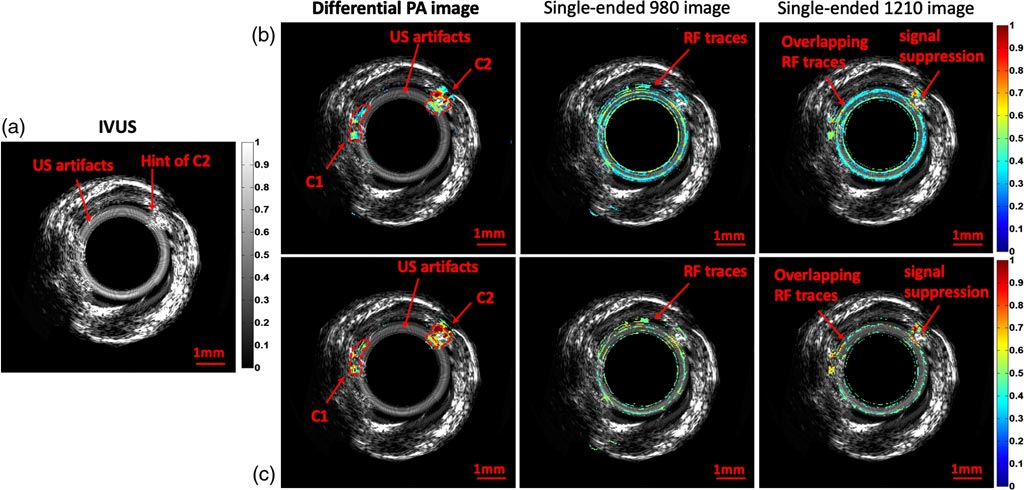Photoacoustic Radar Identifies Cholesterol in Arterial Plaque
By MedImaging International staff writers
Posted on 26 Jun 2019
A new study shows how a combination of low-power continuous wave laser and frequency-domain signal processing can accurately evaluate plaque-based cholesterol.Posted on 26 Jun 2019
Developed by the University of Toronto (UT; Canada), Sunnybrook Research Institute (Toronto, Canada), and Conavi Medical (North York, Canada), differential photoacoustic radar (DPAR) can provide lipid-specific chemical information from an arterial wall with high optical contrast and long acoustic penetration depth. Using two low-power continuous-wave (1210 nm and 970 nm) optical sources in a differential manner, hybrid optical-acoustic DPAR can provide an imaging modality that is only sensitive and specific to the spectroscopically defined imaging target, cholesterol.

Image: Photoacoustic radar uses two different light sources to identify cholesterol (Photo courtesy of JBO).
According to the researchers, in the near-infrared (NIR) window, the 1210-nm optical source usually used during single-ended systems intravascular photoacoustic (IVPA) lipid applications causes sensitivity issues, as other arterial tissues also show some degree of absorption near that spectral region, thereby generating undesirably interfering PA signals. The introduction of the second, 970 nm optical source, results in a more accurate and molecularly specific evaluation of vulnerable atherosclerotic plaques. The study was published in the June 2019 issue of the Journal of Biomedical Optics (JBO).
“Laser photoacoustics is a hybrid optical-acoustic imaging technology in which a subsurface target is excited with near-infrared light and imaged with optically induced ultrasound signals,” wrote lead author Sung Soo Sean Choi, PhD, of the University of Toronto, and colleagues. “Satisfying both high optical contrast and high ultrasonic depth penetration, intravascular photoacoustics is emerging as a competitive modality for plaque detection.”
“Photoacoustic imaging has the best potential for imaging through thick tissues or blood: the high-sensitivity detection of cholesterol described in this paper is made possible with a specifically modified, dual wavelength approach,” commented Professor Brian Pogue, PhD, of Dartmouth College (Hanover, NH, USA), editor-in-chief of JBO. “This is an original direction of imaging research that utilizes an innovative idea of detection based upon differences between wavelengths, and signal analysis based upon radar methods.”
Atherosclerosis is a chronic cardiovascular disease characterized by inflammation and the gradual buildup of lipid-rich plaque in the intima of the arterial walls. Early atherosclerosis is initiated as lipid-carrying low-density lipoproteins (LDLs) get retained beneath the endothelial cells of the vessels. As the LDLs are oxidized, the endothelial cells trigger an immune response by attracting macrophages. The ingested oxidized LDLs in the macrophages increase abnormally, transforming them into foam cells that eventually rupture, causing local damage to the endothelial cells.
Related Links:
University of Toronto
Sunnybrook Research Institute
Conavi Medical














